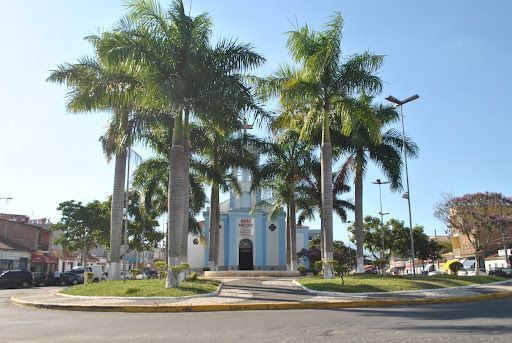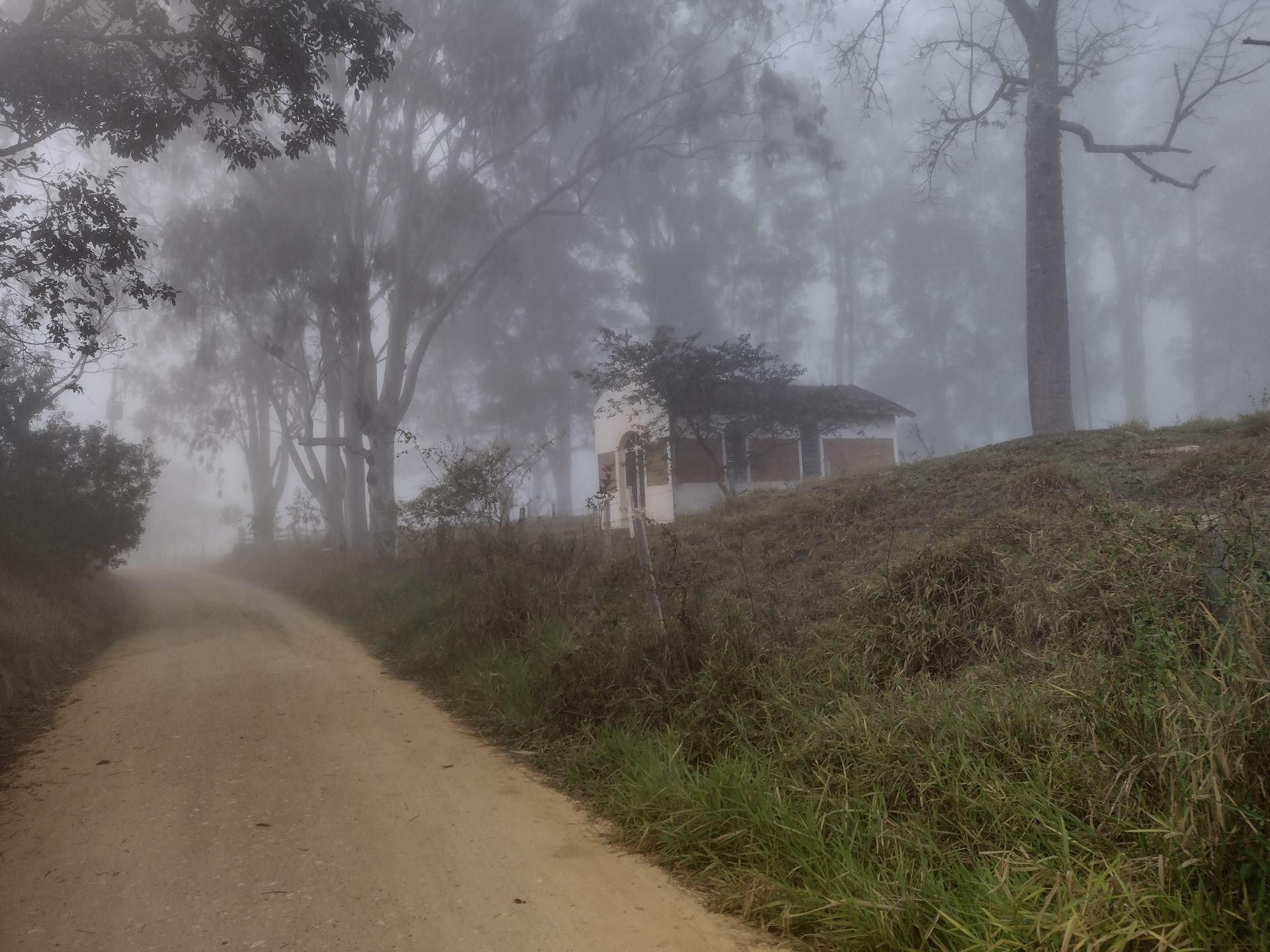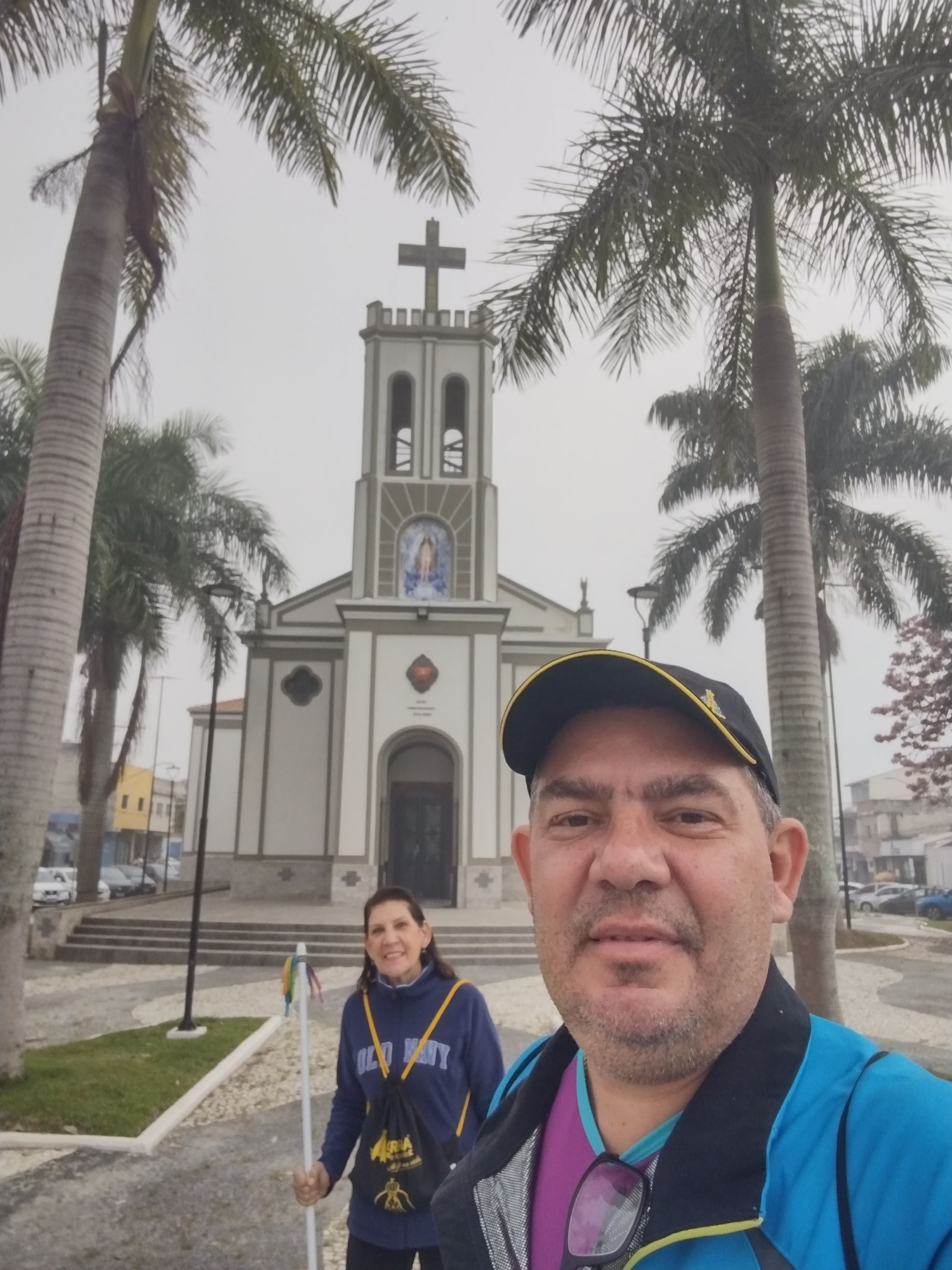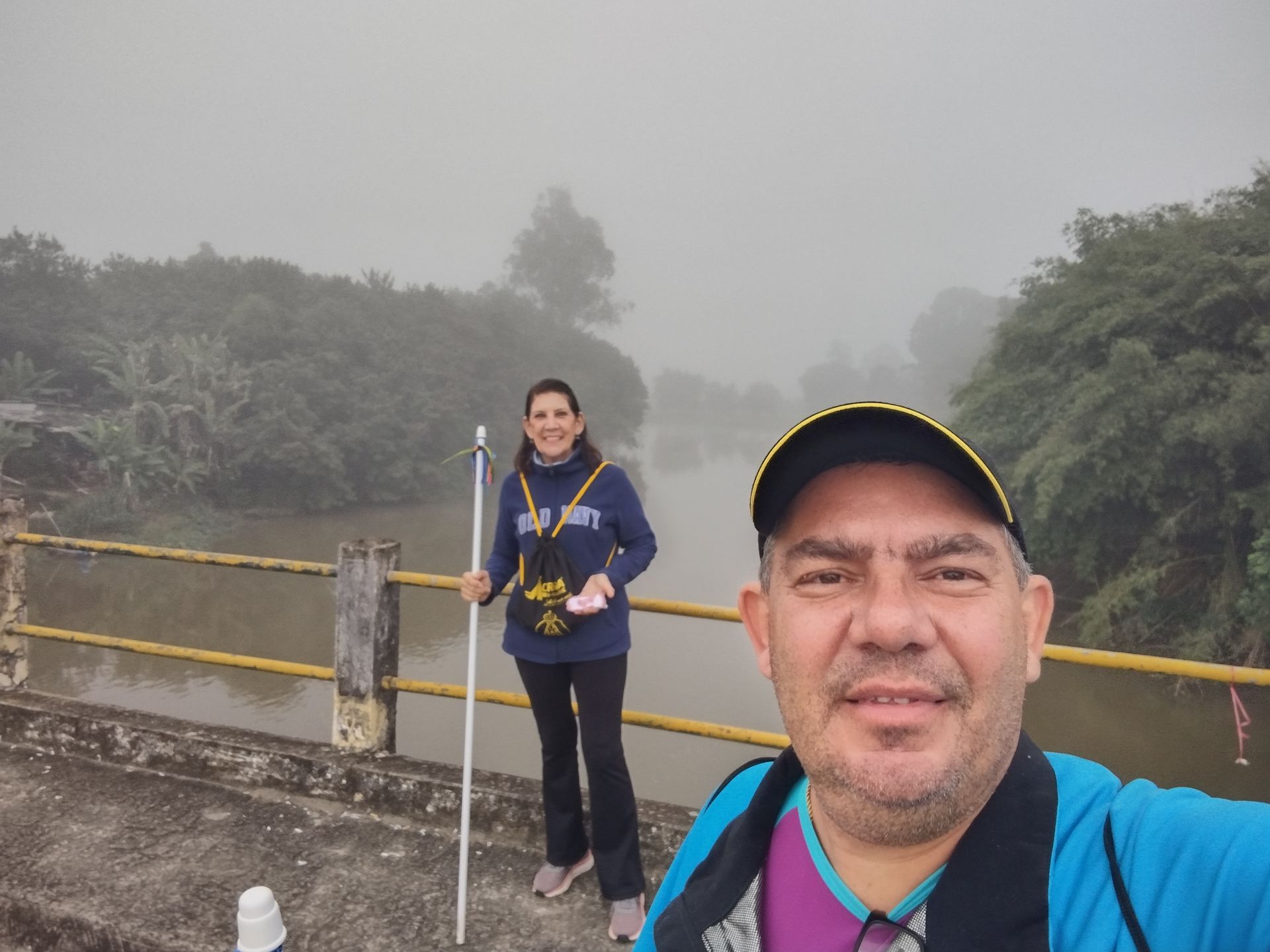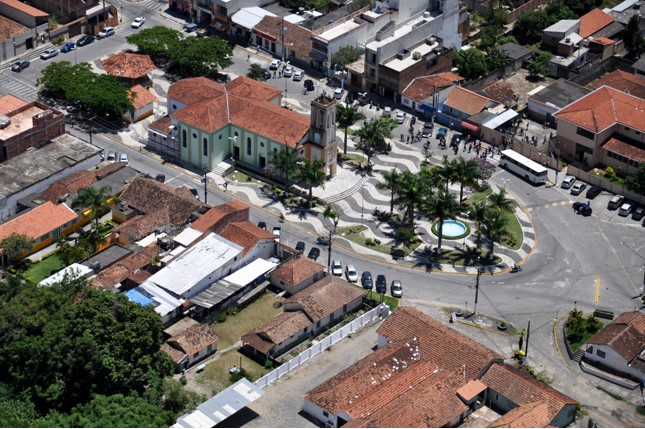Waters of Saint Peter - SP
On this page, the Portal Peregrino da Esperança presents the city of Pindamonhangada, located in the interior of São Paulo, which stands out both for its historical importance and for its role in the economic, cultural and social development of the Paraíba Valley. The chosen Patron Saint was Our Lady of Good Success.
🕊️ “When all seems lost, it will be the happy beginning
of complete restoration.” (Our Lady of Good Success)
Features of the City of São Pedro Waters - SP
The city of Águas de São Pedro, located in the interior of the state of São Paulo, is renowned for its natural qualities and its role as an important therapeutic and leisure tourist destination. Officially founded in the 1940s, the city's origins are linked to the discovery of mineral water springs that sparked interest both in the beauty of the region and in the medicinal properties of these resources. Since then, Águas de São Pedro has established itself as a hub for healthy tourism, attracting visitors seeking therapeutic treatments, contact with nature and tranquility in a carefully planned environment.
The city stands out for its unique urban structure, which combines green areas, well-maintained parks and a welcoming environment that encourages rest and recovery. Águas de São Pedro is one of the smallest cities in the state in terms of territorial extension, but this characteristic does not diminish its importance; on the contrary, the city is efficiently organized and has an urban plan that prioritizes quality of life, with tree-lined streets, inviting squares and services aimed at the well-being of residents and tourists. The careful planning reflects the intention to preserve the identity of the place and value its natural resources.
The mineral waters of Águas de São Pedro are the city's main attraction, recognized for their therapeutic properties that help treat various diseases, especially those related to the digestive and urinary systems. This natural heritage has driven the development of clinics, spas and health centers that use the waters in specific procedures, contributing to the local economy and to the city's reputation as a health tourism destination. The appreciation of these sources also promotes environmental conservation, ensuring that natural resources are preserved for future generations.
In addition to health tourism, Águas de São Pedro offers a range of leisure and cultural options, with events and attractions that enrich the visitor experience. Parks such as Parque Fonte Santo Agostinho provide direct contact with nature and outdoor activities, while the local cuisine stands out for its offering of typical dishes and the appreciation of regional products. The hospitality of the residents and the region's mild climate make the city even more inviting, consolidating its reputation as an ideal refuge for those seeking balance between body and mind.
In short, Águas de São Pedro is a remarkable example of a city that has managed to transform its natural wealth into a highly relevant tourist and cultural heritage. Its harmonious development, focused on promoting health and quality of life, demonstrates a commitment to sustainability and the appreciation of local traditions. The city remains a point of reference in the interior of São Paulo, where tourism, nature and culture intertwine to offer a unique and enriching experience to residents and visitors.
Águas de São Pedro, known for its therapeutic mineral waters and welcoming atmosphere, takes on special importance as the final point of the Caminho do Sol, a pilgrimage route that crosses the interior of São Paulo. This city, with its serene climate and inviting landscapes, offers pilgrims the ideal ending to a journey that goes beyond physical exertion, also involving the search for spiritual renewal and connection with nature. Arriving at Águas de São Pedro represents the culmination of a journey that combines faith, culture and contemplation, giving the city a symbolic role of refuge and rest.
The choice of Águas de São Pedro as the final destination of the route is not by chance, as the city is renowned for its hospitality and well-being-oriented infrastructure, aspects that guarantee hikers a warm welcome and conditions conducive to recovery and relaxation after the hike. The mineral water springs, famous for their healing properties, contribute to this environment of care and tranquility, providing pilgrims with an experience that combines physical and spiritual health. This combination makes the city a unique place, where the journey achieves its purpose of balance and renewal.
In addition to the therapeutic aspect, Águas de São Pedro offers visitors a rich cultural and natural program that enriches the experience of those who complete the Caminho do Sol. Parks, museums and local events are part of the scenery that celebrates the arrival of pilgrims, promoting moments of fellowship and reflection. Contact with preserved nature and the peaceful atmosphere of the city help to consolidate the feeling of welcome and completion, reinforcing the symbolic meaning of the end of the walk.
The role of Águas de São Pedro as a final point also strengthens the bond between the city and the religious and cultural traditions of the region. The constant presence of pilgrims encourages the strengthening of popular and religious manifestations, expanding the reach of local celebrations and valuing the intangible heritage of the municipality. This cultural exchange creates a dynamic and enriching relationship between visitors and the community, contributing to the sustainable development of the city and the preservation of its roots.
Thus, Águas de São Pedro, as the final point of the Caminho do Sol, assumes a role that transcends the simple act of being the physical destination of the route. The city transforms itself into a space of welcome, healing and celebration, where pilgrims can experience the fullness of the journey and find renewal to continue on their paths. This special position reaffirms the importance of Águas de São Pedro in the religious and cultural tourism scene of the interior of São Paulo, consolidating it as a meeting place between faith, nature and history.
The Igreja Matriz de Águas de São Pedro, dedicated to the Immaculate Conception, is one of the most significant symbols of the city, reflecting its history and religious beliefs since its earliest days. Built at a time when the city was still in the process of consolidation, the church quickly became a central point for residents, serving as a place of worship and also a community gathering place. The church represents not only religious faith, but also the construction of a collective identity that united the inhabitants around spiritual and cultural values.
Its architecture, although simple, is marked by elements that express the devotion and care of the faithful over the years. The church has been the stage for countless celebrations, festivals and ceremonies that strengthen the connection between the population and their religious traditions. The temple is not restricted to a physical space, but rather stands as a symbolic landmark of local history, where generations have passed and continue to pass to reaffirm their faith and keep alive the cultural practices that define Águas de São Pedro.
The history of the main church is also intertwined with the development of the city itself, which was established around the therapeutic mineral water springs that attracted visitors and residents. As the city grew and became more structured, the church followed suit, adapting to meet the needs of an expanding community. This growth brought with it the appreciation of religious heritage, which began to occupy a prominent place in the social and cultural life of the population.
In addition to its religious function, the church plays a fundamental role in preserving the city's collective memory. Traditional religious events, such as patron saint festivals and liturgical celebrations, are moments of intense popular participation, which help to maintain the continuity of traditions and strengthen the sense of belonging. The church, therefore, acts as a space where past and present meet, ensuring the transmission of cultural and spiritual values to future generations.
In short, the Igreja Matriz de Águas de São Pedro is more than just a religious temple; it is a symbol of faith, history and identity for the city. Its presence testifies to the development of the community and the importance of religion in the construction of the local social fabric. The church remains an essential reference point, where residents find not only spirituality, but also the strength of the traditions that have shaped and continue to shape Águas de São Pedro.
Upon reaching Águas de São Pedro, the final point of the Caminho do Sol, the pilgrim experiences the culmination of a journey that transcends the simple physical walk, representing a moment of deep reflection, renewal and gratitude. Each step taken along the route — between rural roads, historic cities and natural landscapes — culminates in this encounter with a place where serenity and beauty come together to welcome those who have sought not only a challenge, but also an inner transformation. Arriving at Águas de São Pedro symbolizes the closing of a cycle of effort and perseverance, while at the same time opening doors to a new stage of balance and self-knowledge.
The peaceful atmosphere and the mineral waters that flow through the city's fountains invite pilgrims to slow down, take a deep breath and experience a well-deserved rest after so many days of walking. It is in this setting that one can perceive the deepest meaning of the pilgrimage: not only the physical arrival, but the reconnection with oneself, with faith and with the world around us. Contact with the preserved nature and the welcoming atmosphere of the city encourage contemplation, offering space for the mind and body to renew themselves, while the spirit finds renewed peace and hope.
Arriving in Águas de São Pedro also means joining a tradition that values the encounter between people, cultures and stories. The local community, aware of the importance of the Caminho do Sol, welcomes pilgrims with warmth and respect, providing moments of conviviality and exchange that further enrich the experience. This welcome reinforces the collective nature of the journey, reminding us that the walk is not only done alone, but also through the sharing of experiences that strengthen solidarity and understanding among human beings.
When looking back and remembering the challenges overcome — the stretches of intense sunlight, the climbs and descents, the landscapes that passed before their eyes like a film — the pilgrim understands that the journey was much more than a geographical route. It was an opportunity to mature, to learn about limits and overcoming obstacles, to rediscover values that are often lost in the fast pace of everyday life. This experience leaves deep marks, capable of transforming the way one sees the world and oneself.
Thus, the arrival at Águas de São Pedro ends the Caminho do Sol with an invitation to continue: may the learning, faith and peace found on this journey accompany the pilgrim on all the paths he or she may follow. May the inner strength awakened on this journey be a beacon and guide, illuminating the choices and future steps. And may the memory of this experience be kept as a treasure, always inspiring the search for balance between body, mind and spirit.
Photographs of the City of Águas de São Pedro - SP
